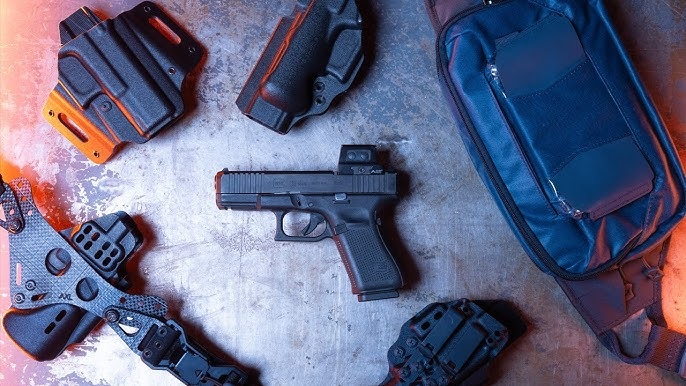
Concealed weapon carry is a method of carrying your weapon discretely when in close proximity to people in the public areas. As such, concealed weapon carry reduces the chances of causing public unease, seeing that people are unaware that you are armed.
Additionally, you can easily neutralize potential security threats with a concealed weapon as you have enough time to assess the threat without exposing yourself or your weapon.
However, it is crucial to evaluate the position you choose to carry and conceal your weapon if you are want to successfully neutralize a threat when the need arises.
Therefore, in this article, we will discuss some of the factors that determine the carry and concealment position of your weapon.
Access
The primary reason most people carry concealed weapons is to defend themselves against potential threats.
Before buying concealed carry holsters for your gun(s), you ought to consider your gun’s accessibility. Accessing your gun easily means that you increase your chances of drawing and firing the first shot in an actual combat situation.
It is recommended to holster and carry your gun on the side of your dominant hand. Your dominant hand eliminates the lag time your brain takes to process and initiate action when you are using your non-dominant hand.
Securing the Weapon
A concealed carry holster is not only essential for faster weapon draw, but also for secure weapon carriage. Many gunmen ignore the importance of holstering their weapons once a threat is neutralized, which is a catastrophic mistake that can cost them their lives.
A good marksman must be able to holster their weapon with one hand. Additionally, the marksman must secure the gun back in the holster without looking as their eyes must remain locked on the threat area.
By default, it is important that you secure your gun only when the threat is completely neutralized.
Caliber Size
Guns work with specific caliber rounds. A Glock 19 pistol uses smaller-sized 9 mm rounds compared to an AK-47 rifle, which uses 7.62 mm * 39 mm long caliber rounds. Consequently, if you have the need for more firepower (need to use high caliber rounds), you will need to carry a larger gun, which makes concealed carry more difficult.
The Glock 19 handgun is both lethal and easy to conceal. A lower caliber gun may offer easier carry and concealment than a Glock 19, but would compromise on firepower.
However, there are other methods of gun concealment (such as purses and fanny packs) that offer concealed carry for larger caliber guns.
Clothing
Concealed weapon carry holsters should primarily blend seamlessly under your clothes for maximum weapon concealment.
There are gender-specific gun holsters. For most women, pocket bra holsters offer concealment on the upper body, while a thigh strap holster hides the gun on the lower body.
If you are going for a more refined and official look, leather straps are the way to go since they offer concealment under the arms for both men and women wearing suits and jackets. This kind of concealment is more suited for private security personnel.
Potential Dangers
A gun is a lethal weapon, whether a round is fired willingly or discharged accidentally. As such, your carry position puts you and those around you in potential danger if a round in your gun is discharged.
Most gun experts recommend against carrying your gun in your pocket for three main reasons. First, your gun may accidentally discharge as you are sitting down causing fatal injuries to you and those behind you. The other reason is you can be easily disarmed in crowded places. Lastly, drawing your weapon will be very difficult.
Conclusion
Part of being a responsible gun owner is knowing the most appropriate carrying and concealment position that works best for you. As such, ensure that you practice different carrying and concealment positions with your gun until you find the most comfortable one.



